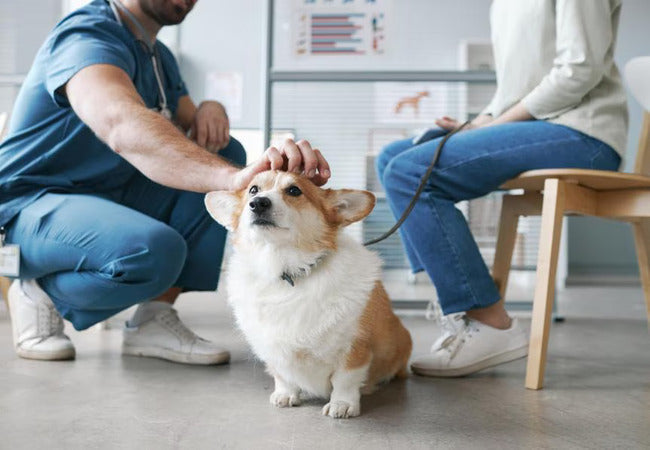Vet‑Approved 2025 Guide: Cystotomy in Dogs – Procedure, Recovery & Prevention 🐶

In this article
Vet‑Approved 2025 Guide: Cystotomy in Dogs – Procedure, Recovery & Prevention 🐶
By Dr. Duncan Houston BVSc
A cystotomy is a common veterinary surgical procedure in which the bladder is opened to remove bladder stones (uroliths), tumors, debris, or foreign bodies. Performed under general anesthesia, it’s often life-saving, especially when your dog is unable to urinate or suffers from recurring urinary issues. In this comprehensive guide, Dr. Duncan Houston BVSc walks you through every aspect—from diagnosis and surgery to recovery, prevention, and enrichment—while also highlighting trusted support from Ask A Vet,. 🐾✨
🔍 Why a Cystotomy May Be Needed
Bladder stones often form due to urinary tract infections, metabolic issues, genetics, or underlying conditions like diabetes and Cushing’s disease. Stones may be tiny or large “pebble-sized,” causing:
- Pain, straining, or difficulty urinating
- Frequent UTIs and bladder inflammation
- Urinary obstruction—a medical emergency
If medical dissolution (diet + antibiotics) fails or obstruction occurs, a cystotomy is the standard solution.
📋 Diagnostic Work-Up
- Complete bloodwork & urinalysis to assess infection and organ function
- Imaging (X-ray, ultrasound) to visualize stones or masses
- Sometimes urine culture to guide antibiotic treatment
🛠️ Step‑by‑Step Surgical Procedure
- Anesthesia & Prep: Dog is anesthetized, IV fluids & catheter in place, abdomen shaved/sterilized.
- Bladder Exteriorization: Midline incision, bladder carefully brought out via ventral approach.
- Stone Removal: Bladder incised; stones removed manually or by spoon/forceps; urethra is flushed retrograde to ensure no residual stones.
- Sample Collection: Stones sent for chemical analysis; bladder tissue may be sent for biopsy/culture if needed.
- Closure: Bladder closed in a two- or three-layer, watertight, inverting pattern using absorbable monofilament suture; abdomen closed in layers.
- Final Checks: Abdominal cavity flushed to remove debris; catheter remains to ensure proper post-operative urine flow.
✅ Immediate Benefits
After surgery, dogs experience rapid relief—distress halts, urination normalizes, and bladder inflammation resolves. Most return to normal activity within a few weeks.
⚠️ Risks & Complications
- Recurrence of stones (up to ~40%)
- UTIs or surgical site infection (29–45%)
- Uroabdomen (leakage) or bladder dehiscence
- Bleeding or anesthetic complications, especially in older or systemically ill dogs
🏥 Post‑Op Care & Recovery
- Hospital stay 1–3 days for monitoring, IV fluids, pain control
- Pain management with opioids initially; NSAIDs continued at home for 3–7 days
- Frequent small potty breaks—leashed and controlled during first 10–14 days
- Strict activity restriction: no running, stairs, or jumping for 2 weeks
- Monitor incision twice daily for swelling, redness, discharge
- Observe for bloody or frequent urination (expected for ~7–14 days)
- Sutures or staples removed at 10–14 days; recheck at 4 weeks for stone prevention guidance
💰 Cost Overview & Insurance
Typical cost ranges from $1,500–3,500, varying by clinic, diagnostics, and patient needs. Insurance often covers unexpected cystotomy but confirm specific coverage ahead of time.
🔄 Preventing Future Stones
- Stone analysis helps tailor prevention strategies
- Prescription urinary diets regulate pH and mineral content
- Encourage increased water intake—consider adding water to food or using fountains
- Consider supplements like omega‑3 fish oil and probiotics for urinary health
🛠️ Long-Term Support & Enrichment
During healing, mental enrichment brings positivity without strain:
- Virtual check-ins via Ask A Vet for recovery support and qualifying subtle concerns without extra clinic visits
📞 When to Contact Your Vet
- Failure to urinate or frequent straining (possible blockage)
- Persistent vomiting, lethargy, or poor appetite
- Incision leakage, swelling, or strong odor around the wound
- Signs of UTI—frequent urination, licking, or discomfort
🏁 Final Thoughts
A cystotomy is a safe, often life-saving surgery that allows dogs to heal from urinary obstruction and stone-related pain. With modern surgical techniques, attentive aftercare, preventive strategies, and supportive tools from Ask A Vet, most dogs recover smoothly and return to normal life. Preventing recurrence is key: monitor hydration, follow diet guidelines, and schedule routine vet care.
Ready to discuss your dog's case, dietary recommendations, or recovery plan? Visit Ask A Vet for expert, personalized support. Here's to your pup's happy, healthy future! 🐶❤️


